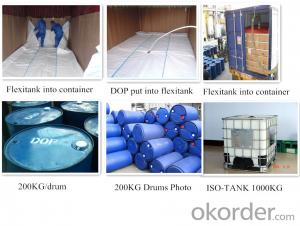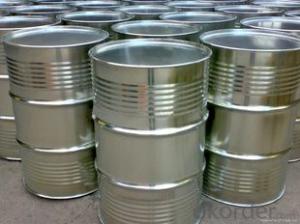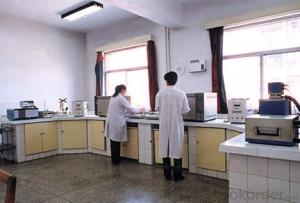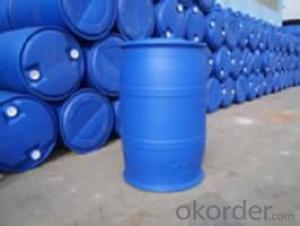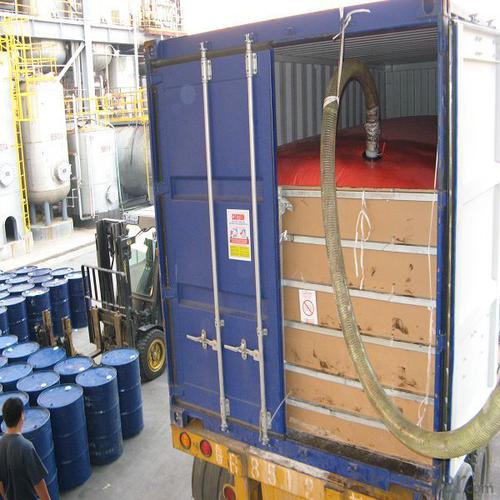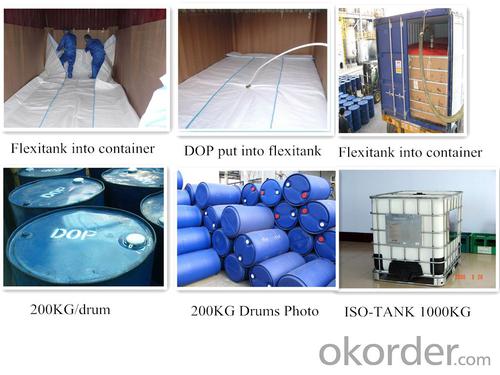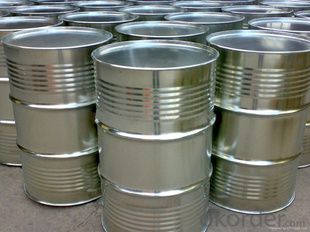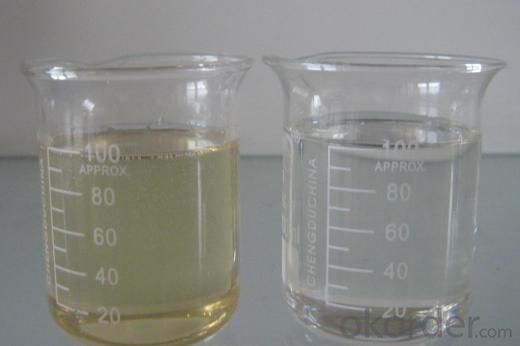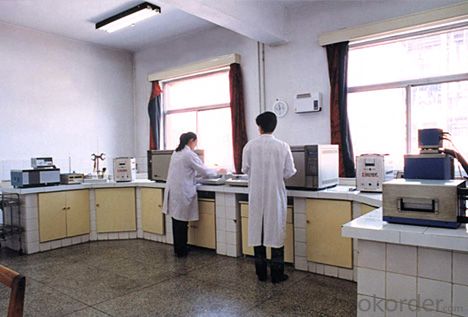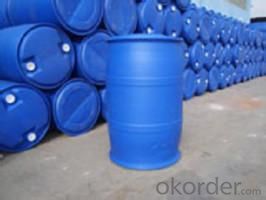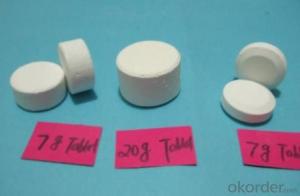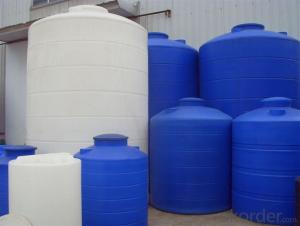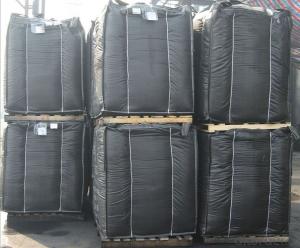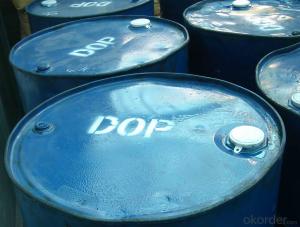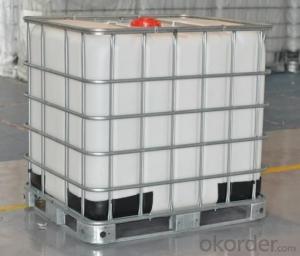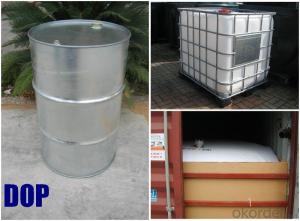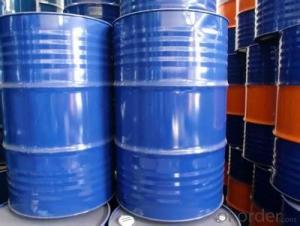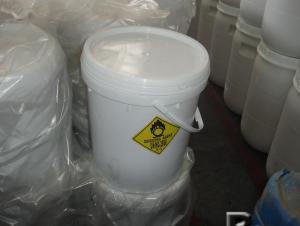Dop Substitute DEDB Widely Used In Different PVC
- Loading Port:
- Tianjin
- Payment Terms:
- TT OR LC
- Min Order Qty:
- 16.8
- Supply Capability:
- 8000 m.t./month
OKorder Service Pledge
OKorder Financial Service
You Might Also Like
Product performance:
Polyol Benzoate (DEDB) is colorless or pale yellow transparent oily liquid, water-insoluble, soluble in aromatic hydrocarbons, ketones and ethers, and has good compatibility withpolyvinyl chloride, ethylene - vinyl acetate copolymer, poly vinyl acetate, polymethylmethacrylate, polyvinylbutyral, nitrocellulose, and ethyl cellulose, etc.
Product application:
Polyol Benzoate(DEDB) is an environmentally friendly plasticizer with the characteristics of strong solubility, good compatibility, low volatility,resistant to oil, water, light, pollution etc. It is suitable for processing PVC flooring material, plastisol, artificial leather, cable material, soft and hard pipe, shoes material, rubber strips, synthetic rubber, and paint, printing ink, etc. It has a better plasticized effect if it is used together withDOP or DBP, and has greatly achieved the purpose of reducing cost .
Product quality index
Item | First grade | Second grade |
Chroma(APHA) ≤ | 50 | 60 |
Ester % ≥ | 99.5 | 90.0 |
Density(20°C)g/ | 1.120-1.126 | 1.172-1.78 |
Acidity(as benzene dicarbonic acid) % ≤ | 0.01 | 0.02 |
Flash Point °C ≥ | 195 | 192 |
Loss on heat(125°C,2 hours)% ≤ | 0.3 | 0.5 |
Chroma after heat treatment | 80 | 100 |
Specifications
1. Direct producer with 15 years experience
2. ISO9001:2000
3. High quality, lower price and best service
4. New plasticizer
Packaging: IBM, net weight: 1000 kg.
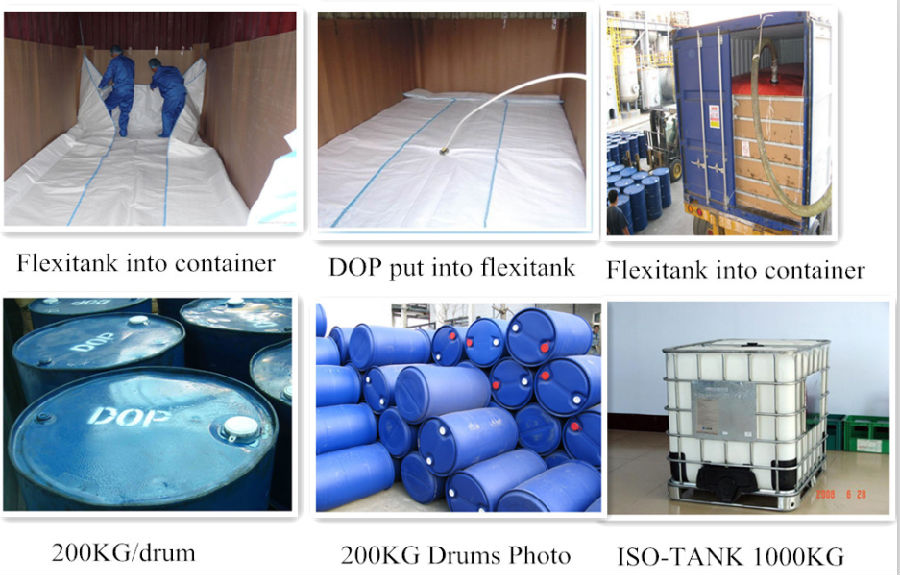 Our Factory:
Our Factory:
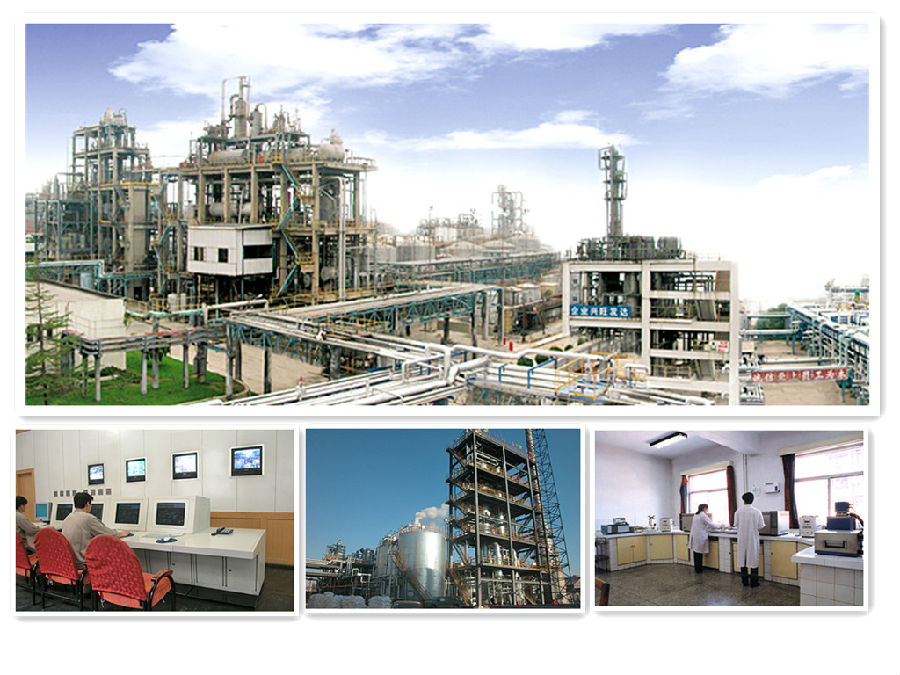
- Q: What are the chemical reaction conditions in organic chemistry are catalyst and heating, please elaborate
- This really does not have omnipotent law, their own more than one point, you can classify to remember, when I was in high school is in accordance with the notes, such as poly, polycondensation and the like. In general, the double triple bond addition, plus halogen is not the conditions, plus HCl, HBr and the like to heat; dehydration reaction generally concentrated H2SO4 heating, dehydration condensation is also; there are some special, such as ethylene added to ethanol Special temperature requirements, it seems that 120 degrees, there are other; other addition poly, polycondensation some need catalyst. The The In short, the conditions are many, in general, you do not go to the high school to do more questions after the feeling, encounter problems do not panic general experience can come out according to experience, this also depends on the usual accumulation, if the equation conditions Wrong to deduct points, it is not worthwhile. There are some questions when the examination will give you some information, whether you know do not know should see clearly, although some of the reaction but the subject to the conditions are not the same, when you do according to the title to write conditions, this will not wrong. In addition, thank you for your help, I do not seem to know you
- Q: The properties of scandium
- Sci-Scandium (Sc) Basic knowledge Introduction In 1879, Swedish chemistry professor Nelson (LFNilson, 1840 ~ 1899) and Clive (PTCleve, 1840 ~ 1905) were almost simultaneously in rare mineral silica beryllium yttrium and black The mine found a new element. They named this element "Scandium" (scandium), ...
- Q: Could you tell me all the differences between those two catalysts? Thank you very much.
- Biological catalyst: 1. Biological catalysts or enzymes are high molecular weight globular proteins. 2.Their composition may change at the end of reaction. 3.Their catalyzing effect is very high. i.e faster than chemical catalyst. 4.They are reaction specific. i.e One enzyme or biological catalyst may catalyze only particular type of reaction and not many. 5.They are intolerant to temperature and pH changes. An enzyme can not function outside its temperature or pH range. e.g amylase,lipase,pepsin Chemical catalyst: 1.Chemical catalysts are simple inorganic molecules with low molecular weight. 2.They remain unchanged at the end of reaction. 3.They are slower compared to enzymes. 4.They are not reaction specific. 5.They function within wide range of temperatures,pH or pressure. e.g vanadium dioxide, platinum
- Q: 1. Catalysts can help to bring the reactants together in the correct orientation2. The chemical formula of a catalyst is written on the left hand side (reactant) side of an equation.3. Catalysts can provide a surface on which the reaction occurs.4. Catalysts increase the activation energy.5. Catalysts increase the magnitude of the equilibrium constant, thus favoring product formation.6. "Enzymes" are biochemical catalysts.7. Catalysts increase the rate of a reaction.8. Catalysts are slowly used up during the reaction and need to be replaced.
- 7 is definetly true
- Q: How do I write about the ion equation?
- 4NH3 + 5O2 == 4NO + 6H2O
- Q: How does the chemical equation calculate the quality of the catalyst?
- Catalyst, the quality of the reaction before and after the same, the same chemical properties.
- Q: What is a Catalyst?
- catalyst is a substance that help in chemical reaction but not actually react with reactants...
- Q: In chemistry what is a catalyst and an example?
- A catalyst is a liquid or a gas you can add to a substance to make it react quicker and/or upon itself or another chemical. A catalyst can be one chemical you add to another that causes a significant reaction or they could be variables in an experiment (like temperature) can be a catalyst. It could also be a liquid/gas that you add to a substance to neutralize it or make it safe to clean/touch/handle. For instance if you spill chemicals in a biology lab, you have to add a catalyst (generally water or clarifying soap) to make it safe to clean up. Hope I could help.
- Q: how can you tell when a substance serves as a catalyst?
- The purpose of a catalyst is to provide an alternate pathway for a reaction to proceed, often one with a lower activation energy, such that the reaction will generally proceed faster. The key to catalysts if they they are NOT consumed by the reaction in the end (they may be consumed in an intermediary step, but if so, a subsequent step will recreate the catalyst). In other words, catalysts do not actually participate in the reaction, so they may be reused when the reaction has completed.
- Q: Nitrogen and hydrogen in the role of high temperature and pressure catalyst to generate ammonia chemical equation
- N2 + 3H2 = catalyst, high temperature and high pressure = 2NH3
Send your message to us
Dop Substitute DEDB Widely Used In Different PVC
- Loading Port:
- Tianjin
- Payment Terms:
- TT OR LC
- Min Order Qty:
- 16.8
- Supply Capability:
- 8000 m.t./month
OKorder Service Pledge
OKorder Financial Service
Similar products
Hot products
Hot Searches
Related keywords

